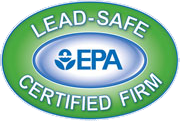
Your garage could be costing you heat and money, so you should know the causes of heat loss in your garage.
Heat loss happens in many ways: a window that isn’t closed all the way, an attic that isn’t insulated, or even a garage that isn’t properly weather sealed. Heat loss from the garage may not seem like a big deal at first glance, but if there is living space adjacent to the garage it can affect the temperature of the space and cost you money in energy bills!
When considering how to solve for heat loss in your garage, the answer could be as simple as replacing the bottom rubber or a larger project like replacing the garage door. However, before determining which of these is the best solution for your home, it’s important to understand the actual causes of heat loss. A simple inspection of your garage door can help you determine the cause and point you in the right direction for a solution.

Faulty Bottom Rubber
Air infiltration can occur in several ways in your garage. One of the most common is faulty bottom rubber. Bottom rubber is applied along the bottom of a garage door to stop air, dirt, bugs, and pests from entering the garage. If the bottom rubber is damaged or doesn’t sit correctly on the garage floor, it isn’t as effective and aids in heat loss.
Weather Seal Issues
The weather seal is the vinyl flap that is placed around the outside frame of a garage door. The vinyl rests on the outer edges of the door to create a seal that helps to stop the air infiltration around the opening of the garage door. If it is not resting properly on the door it allows for air to enter the garage. In the past, strips of wood were placed around the edge of the opening to keep air and pests out, but that method was not effective. If you currently have just a wood strip, you’ll find that the addition of new weather stripping with a vinyl flap will greatly reduce airflow.
Depending on the quality of the installation, the very material that is meant to eliminate air infiltration may be the cause of it. If not properly done, the plastic that the vinyl weather seal is attached to can cause an air gap that allows air in and out of the garage. The weather seal should be nailed every 8 inches and back caulked to eliminate the possibility of air infiltration through air gaps.

Uninsulated Garage Walls
Some garages are constructed of concrete blocks, which means your garage is uninsulated. Over the years, the foundation and concrete blocks settle and can crack, which can lead to even less protection for heat loss. You can fill those cracks with caulk or expandable foam. Another option is to insulate the walls by adding fiberglass insulation and sheetrock to optimize the insulation of your garage as a whole.
Poor insulation in the walls is one of the most common causes of heat loss, but putting the most insulated garage door in a garage that isn’t insulated at all will not solve the problem because the heat will just escape through the walls. The best practice is to match the insulation of your garage door to the insulation of your walls. Homes with 2x4 construction, insulation and sheetrock should have no problem with heat loss through the garage walls.
Uneven Flooring
A garage with uneven or crumbling flooring doesn’t allow the bottom rubber to seal the garage shut as it rests on the ground. Cold air can enter the garage, resulting in heat loss. If uneven flooring is your concern, it’s time to call in a professional to level out the opening of your garage with a fresh layer of concrete.

Uninsulated Garage Door
An uninsulated garage door is perhaps the biggest culprit for heat loss in your garage, as there is no barrier to slow the heat transfer out of your garage. In order to protect your garage from heat loss, you need a door with insulation. Essentially the denser the door construction, the less heat/cold transfer there will be between the inside and outside of your garage. There are three different levels of garage door construction. Each layer of material helps increase the garage door's R-value.

















